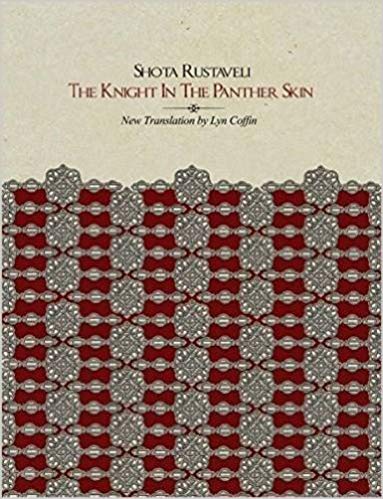Watchmen
By Alan Moore
Illustrated by Dave Gibbons
Let’s take a look at some nerdery by the numbers. Since the release of “Iron Man” in 2008, Marvel Studios has released 19 installments of its famed cinematic universe – by all accounts, the most commercially successful franchise in the history of film. These 20 motion pictures have grossed more than $17 billion at the worldwide box office. Production costs alone surpass the gross domestic products of some countries. And with three more titles slated for release this year and another two scheduled for 2020, these figures will only grow.
Critically, the films tend to have high floors and low ceilings, yet even that may be starting to change. “Black Panther” was up for six Academy Awards this year, including best picture, the first time a Marvel movie has been nominated for anything outside a technical category and the first of its kind to bring home a statue. (The Marvel universe-adjacent murder ballad “Logan” was nominated for its writing last year.)
Put simply, the franchise is a juggernaut. And while I’m not especially interested in litigating why this is so – like any cultural phenomenon, I suspect the reasons are many – I think it’s fair to say superheroes have long captured the fascination of audiences around the world, and only recently have we had the technological capability of giving them their due on the big screen. But I can’t help but be a little bored by these stories. All too often they are tired affairs, us-versus-them scenarios in which innate evil is pitted against innate good, where the fate of the world hangs in the balance but where very little is at stake for the characters we are supposed to care about.
The more successful this franchise becomes, the more I appreciate “Watchmen,” which at once subverts and deconstructs the superhero narrative we’ve grown so accustomed to. In the world Alan Moore creates, superheroes aren’t super at all. With one notable exception, they’re regular ol’ humans, and because they’re human, they’re far more multidimensional than anything Stan Lee ever imagined.
That is to say, regular but not normal. Normal people don’t have secret identities or stalk criminals at night. And it’s the exploration of why they fight crime that sets “Watchmen” apart from all other titles in its class. The moral absolutism of Rorschach. The familial obligation of Silk Specter. The cunning of Ozymandias. The do-goodery of the Night Owl. The sociopathy of the Comedian. Every vigilante has a reason to don the mask, and the ways Moore reveals their motivations – through personal journals, clinical psychological profiles, past school assignments, articles and biographies authored by the principals – are as inventive as they are effective. (These devices go a long way in putting the “novel” into the term “graphic novel.”)
So, too, does every vigilante have a reason to eventually take off the mask. For many, that reason was the Keene Act, legislation passed in a slightly altered version of America that outlaws caped crusaders. Most of them oblige the government’s request, save for Rorschach, who continues to fight crime in spite of the law, and the Comedian, who lends his talents to the U.S. government and whose murder sets the plot of the book in motion.
Then there’s Dr. Manhattan. Once a physicist working on the U.S. government’s nuclear program, he’s now the only superhero with actual superpowers, and, naturally, he was co-opted by the government as soon as he turned. And why wouldn’t he be? His powers are nothing less than godlike. The guy can teleport, reconstitute matter, replicate himself, create life forms, perceive time on several dimensions, you name it.
His powers are such that he reshapes the geopolitical landscape of the late 20th century. Impervious to nearly any countermeasure, Dr. Manhattan is the consummate nuclear deterrent to the Soviet Union. Yet the Cold War continues all the same, in a not-so-subtle nod by Moore to illustrate the folly of brinksmanship. The presence of a superweapon didn’t ease tensions between the United States and the Soviet Union – it aggravated them. Small things changed, of course. The Soviet invasion of Afghanistan was delayed by a few years, the United States won the Vietnam War (thanks to the good doctor’s intervention), and Richard Nixon remained president well into the 1980s. But for the most part, the Cold War transpired in the Watchmen’s world much as it did in our own: marked by distrust, clouded in uncertainty and steeped in paranoia.
Indeed, paranoia pops off the pages of Watchmen as clearly as the colors of the illustrations. The prospect of nuclear annihilation alone would be enough to make the characters look over their shoulders, but the sense of impending doom is compounded by the fact that an unknown killer is taking out masked vigilantes, forcing them to confront their mortality from multiple directions. And as they do, it becomes clearer and clearer to them that trust is ephemeral, morality is relative, good guys are not always good, bad guys are not always bad, and rarely are there happy endings in a world of gray areas.
Cole Altom, managing editor
The Knight in the Panther Skin
By Shota Rustaveli
Translated by Lyn Coffin
Normally, I prefer prose and very rarely read poems – with the exception of the works of Mikhail Lermontov, whose writing encouraged me to explore authors from the Caucasus. I decided to start with Georgian literature – my first acquaintance with Georgian culture, besides the cuisine – but my choice of reading was unusual for me.
Shota Rustaveli’s epic 12th-century poem “The Knight in the Panther Skin” turned out to be the most popular and fundamental work of Georgian literature. It has been one of the most widely read tomes in Georgia for centuries, and it was compulsory school reading in the Soviet Union. Extracts of the poem were translated into all languages of the USSR. I grew up in Russia, but unfortunately, my school did not require us to read this masterpiece, or any other literature from the Caucasus or Central Asia, and today Georgian books are rarely translated into Russian. So, for me, unlike my parents, Georgian literature was a surprising and exciting discovery.
Rustaveli is a widely celebrated Georgian poet and statesman who lived in the 12th century, during the rule of Queen Tamara. “The Knight in the Panther Skin” is his only surviving work, and the manuscript has undergone significant changes over the centuries. Literature from that time is difficult to interpret and understand; without historical and cultural context, this story reads like a fairy tale, filled with grotesque descriptions. It’s therefore helpful – necessary, even – to read this poem alongside articles that provide philological and historical analysis of the plot.
The plot itself, like the plot of any good poem, is complex and interesting. (It is not known whether Rustaveli dreamed this storyline up himself, or whether he rewrote Persian prose as a poem.) It is about more than knights and love: The poem describes an era of Georgian feudalism and idealizes the relationship between a loyal subject and his king. Both of the poem’s main heroes are loyal, brave, strong servants of their king.
Although it is an epic, it’s an easy read – especially thanks to the quality of the translation. “The Knight in the Panther Skin” is not only the foundational work of Georgian literature but also a fundamental work for all world literature, and should be treated as such.
Ekaterina Zolotova, analyst







